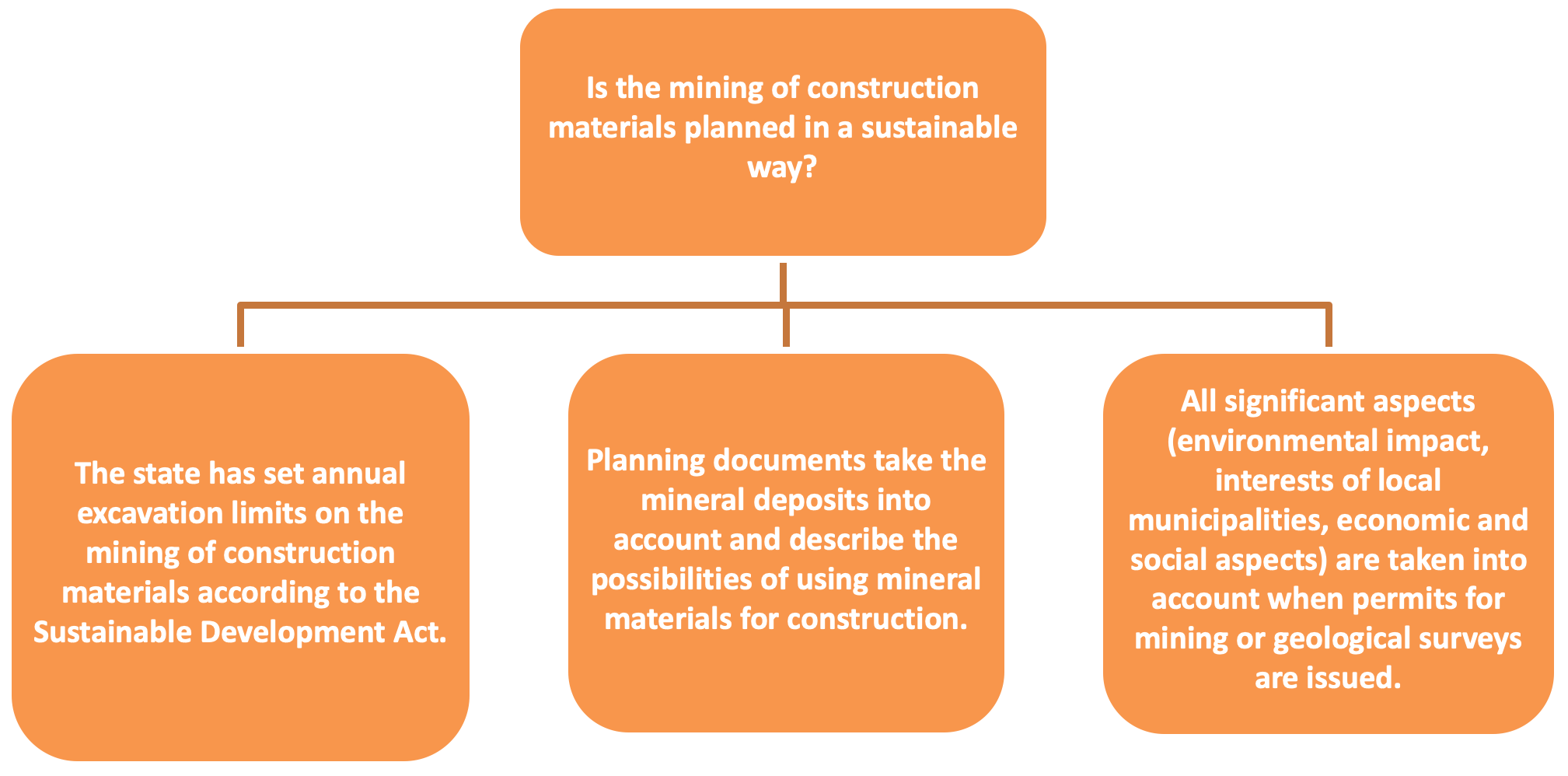MOOC: Auditing environmental impacts of infrastructure
3.3. Sustainability of material use and mining
The mining sector is likely to contribute to the development of the economy of any country through taxes from large-scale mining companies as well as to social and economic infrastructural development in the area where the mine is located. Despite the economic importance of the mining industry, significant environmental effects are associated with it.

Mining is inherently a destructive activity involving the taking of a non-renewable resource.
Some environmental damage is inevitable in any mine – the goal should be to minimise the extent of its effects. According to the World Commission on the Environment and Development, sustainable development can be defined as development that meets the needs of present generations without compromising the need and ability of future generations to meet their own needs (United Nations, 1987). The challenge of the sustainable development framework is to ensure that the mineral sector as a whole contributes to human welfare and wellbeing today, without reducing the potential for future generations to do the same.
The main air quality issue is the dust produced by the work of open pits and by crushing and grinding operations. Mines are also sources of greenhouse gas emissions. CO2 is produced through energy use and methane is sometimes released from underground operations, especially in coal mines. Potential sources of water pollution from mining include drainage from surface and underground mines, wastewater from benefaction and surface run-off.
Mining companies sometimes dump mining waste directly into rivers or other bodies of water as a method of disposal. By nature, mining involves the production of large quantities of waste, in some cases contributing significantly to a nation’s total waste output. The amount of waste produced depends on the type of mineral extracted as well as the size of the mine.
Mining may result in additional indirect impact far from the mine site. Mining alters the land directly underneath and surrounding the mining site due to long-term changes in the land structure. Mining can cause the land to sink, change the water flow in the area, etc. The most obvious impact on biodiversity is the removal of vegetation, which alters the availability of food and shelter for wildlife. On a broader scale, mining may affect biodiversity by changing the composition and structure of species in an area. As soon as a mineral is discovered and its mining potential is established, local inhabitants are affected.
 | Reading suggestion!See more about the environmental impact of mining in Auditing Mining: Guidance for Supreme Audit Institutions (INTOSAI WGEA, 2010). |
The following table shows various questions that can be raised when auditing mining and how these questions relate to different aspects of sustainability.
Sustainability aspects covered by questions |
Questions that can be asked when considering the sustainability of mining infrastructure |
| Economic & social | What social and economic aspects are involved in mining and in the use of the mineral resource? How much does the state profit from mining? |
| Economic & environmental | Does the state inspect the performance of mining companies? How does the state monitor the environmental impacts of the mine and what guarantees does the state require to ensure that the negative effect is minimal? Has the state set clear rules and guarantees for closing and decommissing mines? Is the state conducting supervision over the companies to ensure these rules are being followed? Is the state imposing the guarantees if the rules are not followed? |
| Environmental | What is the significant environmental impact arising from mining and resource use? Has the state ensured the reduction of such impact? Has the state set clear rules for environmental protection when issuing permits for mining? |
| Environmental, social & economic | How long should the natural resources last? Has the state made the necessary decisions and arrangements to ensure this? Does the proposed timeframe take into consideration the needs of future generations? Has the state set annual limits on mining? How does it affect human health? How else are the local inhabitants affected by mining? What economic losses may the habitants encounter (e.g. loss of farming land)? |
Audit example:
’National arrangement of mining mineral resources used in construction’ (National Audit Office of Estonia, 2009)
The National Audit Office of Estonia has audited mining resources on a number of occasions – be it peat, building materials or oil shale. All of these have been environmental audits and have analysed the sustainability aspect of mining, among other things. This particular audit focused on the planning and supervision of resource mining. In Estonia, sustainable development law stipulates that the government must establish limits on the excavation of mineral resources. These limits help ensure that too many mines are not opened and that the mines are not too tightly packed in one area.
The National Audit Office of Estonia used three sets of audit criteria to evaluate the sustainability of mining. First, the audit looked into whether the government had decided how long natural resources should last and whether excavation limits had been set accordingly. Then the audit team analysed whether the feasibility and necessity of opening mines in specific locations had been analysed during national, county and local government planning procedures. Finally, the audit checked whether all relevant aspects of environmental, economic and social impact were taken into consideration when issuing the mining permits.
The audit concluded that the mining of mineral resources for construction was not arranged in a sustainable way because there were no annual usage limits and the opening of new mines was dependent solely on business interests. Plus, supervision over mining activities was insufficient.
The following audit question with evaluation criteria was raised to investigate the sustainability of the mining of construction materials:


